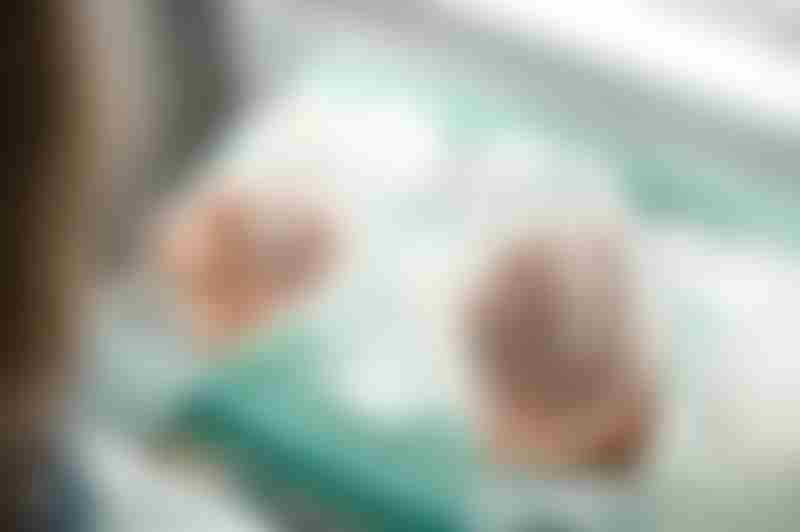Breast Reconstruction: What Are My Options?

Source: Shutterstock
For individuals who have undergone or are going to undergo surgery to treat breast cancer, it may be hopeful to know that there are several options for them when it comes to breast reconstruction. To go through breast cancer is already mentally and physically exhausting. During this journey, maintaining a sense of self and feeling comfortable in one’s own skin is just as crucial. While the results of breast cancer surgery are positive for one’s health, facing the prospect of breast reconstruction can be demanding. The options for breast reconstruction after a mastectomy can vary depending on your individual circumstances, preferences, body size and shape and other medical conditions. Thus, it's important to consult with your medical team to determine the best approach for you. Here are the two main options for breast reconstruction.
Implant-based reconstruction

Source: Shutterstock
Breast reconstruction using implants is a common and widely used method for restoring the shape and appearance of the breast. It involves surgically placing breast implants, either saline or silicone, beneath the chest muscles or skin.
Saline implants
These implants are filled with sterile saltwater and can be adjusted for size during subsequent visits. These are usually temporary tissue expanders so are later swapped for a permanent implant.
Silicone gel implants
These implants are filled with silicone gel and are known for their natural feel and appearance.
Autologous tissue (flap) reconstruction

Reconstructed breast three months after undergoing a nipple-sparing mastectomy and autologous flap reconstruction. Source: Science Photo Library
Autologous tissue reconstruction, also known as flap reconstruction, is a surgical technique used to reconstruct the breast. Unlike implant-based reconstruction, autologous tissue reconstruction involves using your body's tissues, usually from another area of your body, to create a new breast mound. This piece of tissue is called a flap and contains skin, fat, blood vessels and sometimes muscle. This approach offers a natural look and feel to the reconstructed breast.
Flaps can be categorized as either pedicled or free, depending on their origin.
Pedicled flap
Both the tissue and its accompanying blood vessels are transferred as a unit to the breast area within the body. The continuity of the blood supply to the tissue being used for reconstruction remains undisturbed, eliminating the need for subsequent reconnection of blood vessels after the tissue's relocation.
Free flap
Free flaps involve the detachment of tissue from its existing blood supply. Subsequently, this detached tissue must be reconnected to new blood vessels within the breast area, using a surgical technique called microsurgery. This intricate procedure ensures the provision of a new blood supply to the reconstructed breast.
There are several types of autologous tissue reconstruction depending on where the flap is taken from. Common flaps taken from the abdomen and back include:
- TRAM (Transverse Rectus Abdominis Muscle) Flap

Illustration of TRAM pedicle-flap surgery. Adapted from: Canadian Breast Cancer Network
The TRAM flap is taken from the lower abdomen, and includes skin, blood vessels, fat and muscles. It can be either pedicled or free. This is now less commonly used as it involves cutting through muscle.
- DIEP (Deep Inferior Epigastric Perforator) Flap

Illustration of DIEP flap reconstruction. Adapted from: Canadian Breast Cancer Network
The DIEP flap is a free flap taken from the abdomen and contains skin, blood vessels and fat. It does not contain any muscle.
- Latissimus Dorsi (LD) Flap

Illustration of Latissimus Dorsi flap surgery. Adapted from: Canadian Breast Cancer Network
For breast reconstruction, the LD flap is pedicled and comes from the middle and side of the back. This usually also needs an implant to get a good size volume.
For women who have had major abdominal surgery or have insufficient abdominal tissue to reconstruct a breast, free flaps can be taken from the thigh or buttocks instead.
In some cases, such as when there is insufficient skin and muscles left over from a mastectomy, a combination of both autologous tissue and implants is used.
Choosing the best breast reconstruction method for any individual is challenging and confusing. Therefore, it is crucial to have open and thorough discussions with the medical team to understand the potential risks, benefits, and outcomes of each option. Your overall health, body type, previous treatments, and personal preferences and sometimes the type of cancer you have or cancer treatment you are having, will play a role in determining the most suitable reconstruction approach for you.
Immediate versus delayed breast reconstruction
Another option to consider is when the breast construction is to be done.
Immediate reconstruction
Immediate reconstruction is done at the same time as the mastectomy. If the breast reconstruction is done together with the mastectomy, you would only have to go through surgery once, provided there are no major complications. Immediate reconstruction may also result in better aesthetic outcomes as certain breast landmarks, breast pocket and breast skin are preserved, allowing for a more natural-looking reconstruction.
However, immediate reconstruction may not be suitable for everyone due to either medical reasons or personal preferences. Those who have to undergo additional breast cancer treatment may not be able to undergo immediate reconstruction as these treatments may interfere with wound healing and cause other complications. These treatments, especially radiation therapy, can also affect the aesthetic of the reconstructed breast as they may cause it to lose volume and color, resulting in a change of appearance. Some people may also choose to wait if they are not prepared for it or do not want a reconstruction at the time of surgery.
Delayed reconstruction
Delayed reconstruction is done after the initial recovery of the mastectomy. It can be done weeks, months or even years later. Delayed reconstruction is often recommended to those who require additional treatment after their lumpectomy or mastectomy. However, studies have shown that delayed reconstruction has been associated with generally lower risks of overall and major complications. Patient-reported outcomes have also shown that there are no significant differences in postoperative levels of quality of life compared to those who have done an immediate reconstruction. As such, rest assured that if immediate reconstruction is not available to you, delayed reconstruction can also provide a substantial improvement in quality of life and body image.
Ultimately, the choice between immediate and delayed breast reconstruction is highly individualized and should be made in consultation with a multidisciplinary medical team. Factors such as overall health, cancer treatment plan, and personal preferences play crucial roles in determining the most appropriate approach for each patient.
Remember that there is no one-size-fits-all solution, and the choice of reconstruction should be based on what makes you feel most comfortable and confident. Your medical and nursing team will work closely with you to develop a personalized plan that aligns with your goals and well-being. Trust the team, and more importantly, trust yourself to choose what will make you feel the most comfortable and confident moving forward.